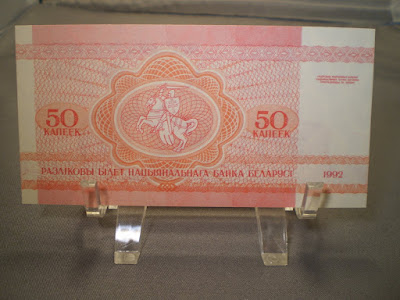
PUB 003
JFK Original Speeches
Media: 33 1/3 Vinyl Record
Year: 1963
Details: only speech excerpts
I haven't posted anything from the Publications Collections since the birth of the blog back in October, so this has been way over due. Back when I moved in the mid-1990's the old house owner left a bunch of old vinyl records in the garage. I've kept about half of them and will be posting many of them up here (most of them are records from famous broadway musicals). Today's however is fairly interesting in its own right. Entitled 'John Fitzgerald Kennedy: The Presidential Years - 1960-1963: Original Speeches.' Produced by the Pickwick International company, the 33 1/3 RPM record has clips from 16 of the 35th president's greatest speeches.
The two sides include experts of these speeches:
Pre-Election - November 6, 1960
Election Eve - November 8, 1960
Oath of Office - January 20, 1961
Inaugural - January 20, 1961
State of the Union - January 31, 1961
Alliance for Progress - August 6, 1961
U.N. Address - September 26, 1961
Peace Corps - March 2, 1962
U.S. Steel - April 12, 1962
On Labor - September 3, 1962
On Cuba - October 23, 1962
Birmingham Segregation - May 13, 1963
Berlin Wall - June 26, 1963
Nuclear Test - July 15, 1963
Houston - November 21, 1963
Dallas - November 22, 1963
The back of the record's sleeve has a reprint of The New York Times from Saturday November 23, 1963 which has a memoriam for the late President Kennedy. While I can find no discernible date of when the record was made, I have done a little research and it may have been in 1963, but according to Amazon it was in 1995 but I'm fairly sure it was before 1995 and most of the other records were from the 1960's so I'm going to go with 1963 for now.
And as a side note, when I took the picture the face recognition found JFK's profile and asked me if someone blinked. Thought it was funny enough to share.


















